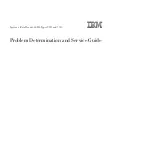
1-3
Cisco ASA Series CLI Configuration Guide
Chapter 1 Configuring Static and Default Routes
Configuring Static and Default Routes
Configuring a Static Route
Static routing algorithms are basically table mappings established by the network administrator before
the beginning of routing. These mappings do not change unless the network administrator alters them.
Algorithms that use static routes are simple to design and work well in environments where network
traffic is relatively predictable and where network design is relatively simple. Because of this fact, static
routing systems cannot react to network changes.
Static routes remain in the routing table even if the specified gateway becomes unavailable. If the
specified gateway becomes unavailable, you need to remove the static route from the routing table
manually. However, static routes are removed from the routing table if the specified interface goes down,
and are reinstated when the interface comes back up.
Note
If you create a static route with an administrative distance greater than the administrative distance of the
routing protocol running on the ASA, then a route to the specified destination discovered by the routing
protocol takes precedence over the static route. The static route is used only if the dynamically
discovered route is removed from the routing table.
You can define up to three equal cost routes to the same destination per interface. Equal-cost multi-path
(ECMP) is not supported across multiple interfaces. With ECMP, the traffic is not necessarily divided
evenly between the routes; traffic is distributed among the specified gateways based on an algorithm that
hashes the source and destination IP addresses.
To configure a static route, see the following section:
•
Adding or Editing a Static Route, page 1-3
Adding or Editing a Static Route
To add or edit a static route, enter the following command:
Command
Purpose
route
if_name dest_ip mask
gateway_ip
[
distance
]
Example:
hostname(config)# route outside 10.10.10.0
255.255.255.0 192.168.1.1 [1]
Enables you to add a static route.
The
dest_ip
and
mask
arguments
indicate the IP address for the destination
network and the
gateway_ip
argument is the address of the next-hop router.
The addresses you specify for the static route are the addresses that are in
the packet before entering the ASA and performing NAT.
The
distance
argument
is the administrative distance for the route. The
default is 1 if you do not specify a value. Administrative distance is a
parameter used to compare routes among different routing protocols. The
default administrative distance for static routes is 1, giving it precedence
over routes discovered by dynamic routing protocols but not directly
connected routes.
The default administrative distance for routes discovered by OSPF is 110.
If a static route has the same administrative distance as a dynamic route,
the static route takes precedence. Connected routes always take precedence
over static or dynamically discovered routes.
Summary of Contents for 5505 - ASA Firewall Edition Bundle
Page 28: ...Glossary GL 24 Cisco ASA Series CLI Configuration Guide ...
Page 61: ...P A R T 1 Getting Started with the ASA ...
Page 62: ......
Page 219: ...P A R T 2 Configuring High Availability and Scalability ...
Page 220: ......
Page 403: ...P A R T 2 Configuring Interfaces ...
Page 404: ......
Page 499: ...P A R T 2 Configuring Basic Settings ...
Page 500: ......
Page 533: ...P A R T 2 Configuring Objects and Access Lists ...
Page 534: ......
Page 601: ...P A R T 2 Configuring IP Routing ...
Page 602: ......
Page 745: ...P A R T 2 Configuring Network Address Translation ...
Page 746: ......
Page 845: ...P A R T 2 Configuring AAA Servers and the Local Database ...
Page 846: ......
Page 981: ...P A R T 2 Configuring Access Control ...
Page 982: ......
Page 1061: ...P A R T 2 Configuring Service Policies Using the Modular Policy Framework ...
Page 1062: ......
Page 1093: ...P A R T 2 Configuring Application Inspection ...
Page 1094: ......
Page 1191: ...P A R T 2 Configuring Unified Communications ...
Page 1192: ......
Page 1333: ...P A R T 2 Configuring Connection Settings and QoS ...
Page 1334: ......
Page 1379: ...P A R T 2 Configuring Advanced Network Protection ...
Page 1380: ......
Page 1475: ...P A R T 2 Configuring Modules ...
Page 1476: ......
Page 1549: ...P A R T 2 Configuring VPN ...
Page 1550: ......
Page 1965: ...P A R T 2 Configuring Logging SNMP and Smart Call Home ...
Page 1966: ......
Page 2059: ...P A R T 2 System Administration ...
Page 2060: ......
Page 2098: ...1 8 Cisco ASA Series CLI Configuration Guide Chapter 1 Troubleshooting Viewing the Coredump ...
Page 2099: ...P A R T 2 Reference ...
Page 2100: ......














































